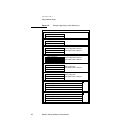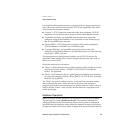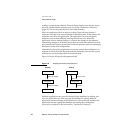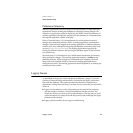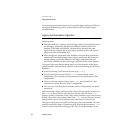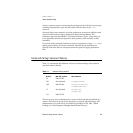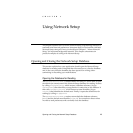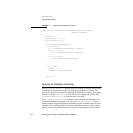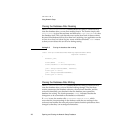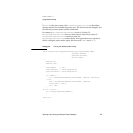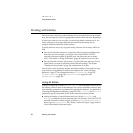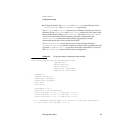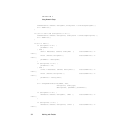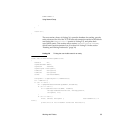
CHAPTER 2
Using Network Setup
26 Opening and Closing the Network Setup Database
Listing 2-1 Opening the database for reading
static OSStatus MyOpenDatabaseForReading(CfgDatabaseRef *dbRef,
CfgAreaID *readArea)
{
OSStatus err;
assert(dbRef != nil);
assert(readArea != nil);
err = OTCfgOpenDatabase(dbRef);
if (err == noErr) {
err = OTCfgGetCurrentArea(*dbRef, readArea);
if (err == noErr) {
err = OTCfgOpenArea(*dbRef, *readArea);
}
if (err != noErr) {
(void) OTCfgCloseDatabase(dbRef);
}
}
if (err != noErr) {
*dbRef = nil;
*readArea = kInvalidCfgAreaID;
}
return err;
}
Opening the Database for Writing 2
The MyOpenDatabaseForWriting routine shown in Listing 2-2 shows how to open
the default (or current) area in the Network Setup database for writing. The
approach is similar to that used for opening the database for reading except that
instead of calling OTCfgOpenArea to open the area for reading, the routine calls
OTCfgBeginAreaModifications to open the area for writing.
The OTCfgBeginAreaModifications function returns another area identifier that
references a writable temporary area. The MyOpenDatabaseForWriting routine
returns both the original default area identifier and the writable temporary area
identifier. You must keep both of these area identifiers because you need them
both in order to close the database. You can only make changes to the writable



